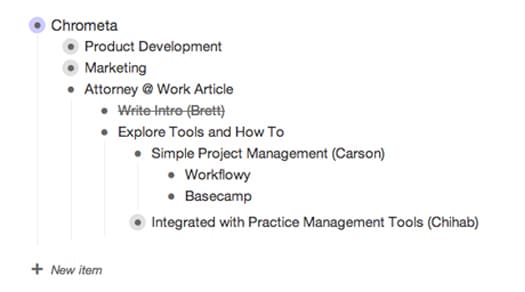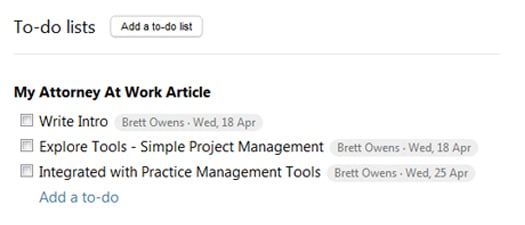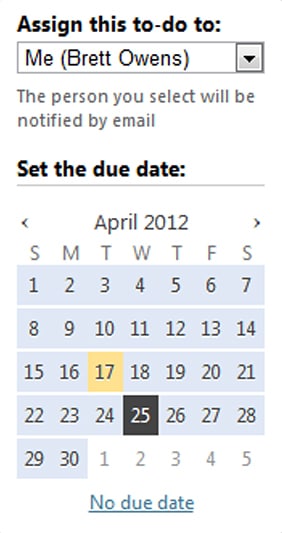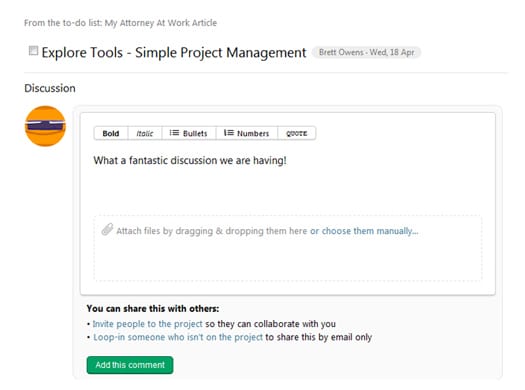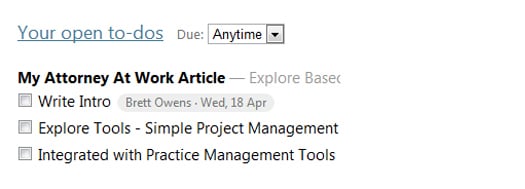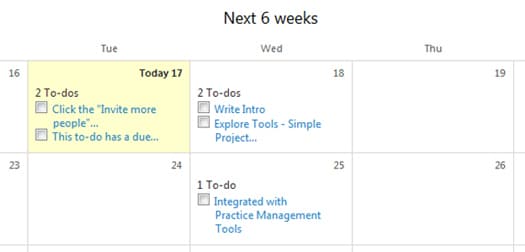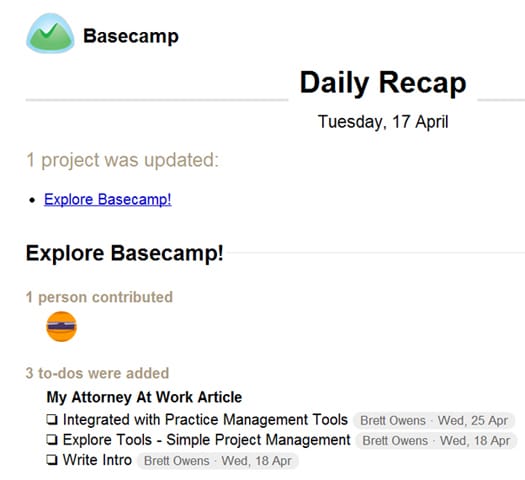Sure there are plenty of project management apps to keep us on task, personally. But can project management software be used for managing others, too? In “Project Management: Easy as 1-2-3,” Brett Owens highlighted products to help you manage your practice. So we asked him back to apply his “effective yet simple” criteria to explore that intersection between the products and the people needed to get things done.
If you want to use project management products as tools for delegating work, communicating deadlines and collaborating with teams—and do it quickly and easily—there are a few products you should be familiar with. You will likely only need (and want) to use one of them at a given point in time—which one will depend on your personal management style, and the tools you are currently using to manage your practice.
If You’re Not Using Anything …
Despite the media fanfare about legal project and practice management tools, many solo and small firm attorneys still don’t really use any software beyond Microsoft Office to manage their practices. If you’re nodding your head, please allow me to reintroduce Workflowy, the simplest project management app you’ll ever see.
Think of Workflowy as a giant whiteboard in your office—with the added bonus that everyone can also access it remotely. If something needs to be done, you add a bullet. When items are completed, you cross them off, or delete them. You can also indent sub-items below higher level objectives, to create sub-lists.
Please don’t tell my boss, but here at Chrometa, we actually manage our entire product road map using Workflowy alone. (We also have a whiteboard in the office, but it’s more for nostalgia and drama). Figure 1 shows an example of a “Workflowy” I drew up to manage my items for this article.
To add a new bullet point, you just hit the Enter key on your keyboard. To indent, hit the Tab key. To “delegate” an item, I just write in the name of the person responsible in parentheses at the end. (How nice of me to delegate the completion of this article to my key engineers! Just kidding, I will remain with you to the bitter end here—for better or for worse).
If you’re not using any tools for managing your firms’ tasks yet, start with Workflowy. It’s ideal for managing to-do lists. If and when you need more horsepower–specifically the ability to more formally assign tasks to individuals, collaborate with your team members, and set deadlines–you can turn up the volume with this next product.
The Stalwart Strikes Back: Basecamp
I’ve joked that Basecamp’s interface appears to be straight out of 2004. Recently, though, the talented team at 37 Signals officially launched the next edition of Basecamp, proving you can’t keep a good web app company down. It has a really slick look and feel. Like Workflowy, you can setup a to-do list. Figure 2 shows the equivalent of my Figure 1 to-do list in Basecamp.
When creating items, I can also give them each a due date, and assign them to a member of my team, or myself, as shown in Figure 3.
I can add comments, attach items and invite my team members to collaborate on tasks, too, as shown in Figure 4.
The key advantage of Basecamp over Workflowy is the inherent ease of following up on tasks—with your team members, and also yourself! For example, Figure 5 shows how I can view my own open to-dos.
In the calendar view, shown in Figure 6, I can also see everything my firm has going on, and due, over the next several weeks:
And how do we follow up on all these assignments … preferably without having to actually do it ourselves? For this, Basecamp caters to the manager who wants to simply delegate once, and never speak of the task again! It emails daily recaps, shown in Figure 7, to team members, dropping new assignments directly in their inbox. And open to-dos can be sorted by team member, by due date–so that at a glance you can see who should not be leaving the office early today.
Next Time …
Any potential drawbacks to using Basecamp? As astute reader Gary pointed out in our last post, it won’t be integrated with your firm’s existing software—you’re going to have another silo on your hands. This may not be an issue for you. But, for those who want a fully integrated solution, next time I’ll take a look the project management components of two leading cloud-based law firm practice management software products.
Brett Owens is CEO and Co-Founder of Chrometa, an automatic timekeeping software product designed for solo and small firm attorneys.




